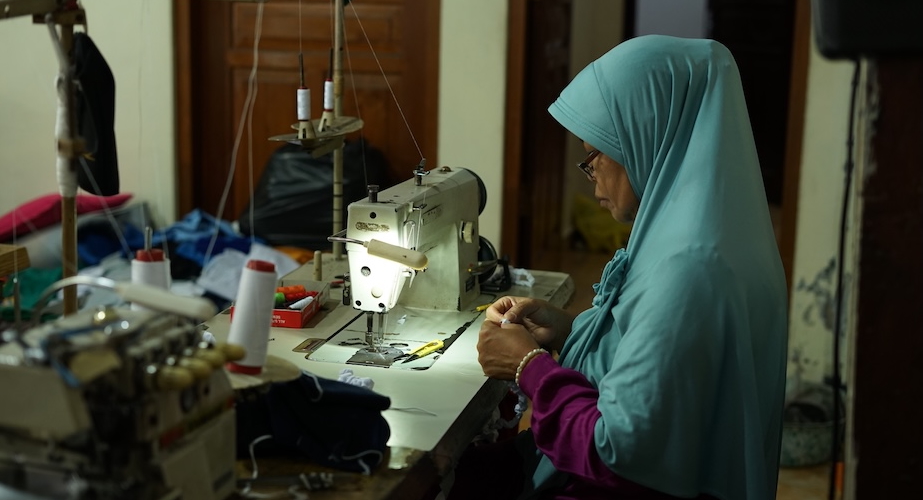Illegal logging in Indonesia's national parks
Julian Newman
In 1998 it was voracious forest fire. In 1999, rampant illegal logging, as the future prospects for Indonesia's remaining tropical forests continue to darken.
The London-based Environmental Investigation Agency in collaboration with the Indonesian group Telapak have been monitoring illegal logging in two of Indonesia's flagship national parks Tanjung Puting in Central Kalimantan, and Gunung Leuser in northern Sumatra.
Both parks provide a protected haven for some of the country's most endangered wildlife including the orangutan, proboscis monkey, Sumatran tiger, Sumatran rhino and clouded leopard. Both are being devastated by illegal logging on a commercial scale.
In Tanjung Puting the EIA/ Telapak investigators witnessed virtual anarchy in the park. While there has always been small-scale illegal logging in the more remote parts of the 400,000 hectare park, over the last year the logging has escalated dramatically and is now affecting the core area where scientific research stations and tourist lodges are found.
Along the Sekonyer River - one of the park's main arteries blatant logging activity was observed. Logging camps were found in close proximity to the park's guard posts and the scientific camps. An extensive network of wooden rails had been constructed to pull the logs out and the sound of chainsaws permeated the air. On a single day over 700 illegal logs were counted being towed down the river in broad daylight by a succession of small boats.
Once the logs reach Kumai Bay they are either loaded onto steel barges or taken to nearby sawmills. All of this activity takes place in full view of the authorities charged with protecting the park. Many local officials from the forest department and police are implicated in the logging, and actually issue 'permits' for the loggers to operate in the park and charge a levy on the illegal timber being brought down the Sekonyer River.
The loggers are targeting ramin trees, a valuable luxury hardwood used for mouldings, picture frames, furniture components and futon beds. Ramin is listed as vulnerable across its range and only grows in swamps so it cannot be cultivated. Sawn ramin can fetch up to US$800 per cubic metre on the international market. Yet the loggers inside Tanjung Putting receive a pittance a few dollars per cubic metre cut. It is the corrupt officials and local timber bosses making the money from the pillage of the park.
EIA/ Telapak traced the illegal timber to two sawmills in Kumai, and to the factories of a local timber baron Abdul Rasyid. Posing as timber buyers the investigators gained access to two of Rasyid's factories and discovered a huge operation based solely on ramin. Unmarked logs were seen being delivered to one of the factories, proof that the timber was illegal. Within minutes of meeting Rasyid's nephew, the investigators were offered the opportunity to conduct illegal business.
Leuser
The situation in Gunung Leuser National Park is just as dire. Logging activities were apparent even in the Suaq Balimbing research station, the only place where orangutans have been observed using tools such as sticks to open fruit. Once again EIA/ Telapak traced the activities of the loggers inside the park to local sawmill owners, who were funding and organising the illegal logging.
From field reports it appears that many of Indonesia's stunning national parks are being heavily logged. Such a finding is indicative of a much deeper malaise threatening the country's remaining forests. Recent research by the Indonesia-UK Tropical Forest Management Programme reveals that illegal logging now outstrips legal timber production in Indonesia.
The research found illegal logging to account for 32 million cubic metres every year (equivalent to 800,000 hectares of land being logged), compared with official production of 29.5 million cubic metres. Indonesia is not only losing its forests at a rapid rate, but is also losing vast amounts of revenue in a country where 50 million people are below the poverty line.
The impact of this wanton destruction cannot be underestimated. Species such as the orangutan are increasingly being hemmed into the pockets of protected forests in Kalimantan and Sumatra, and even these area are now being logged. Orangutan populations have plummeted by 50% in the last decade, and fewer than 25,000 remain in the wild.
The outbreak of illegal logging in the national parks is a legacy of 30 years of mismanagement and corruption in Indonesia's forest sector under the Suharto regime. Vast tracts of land were dished out to business cronies, the overwhelming majority of forest concession holders broke the rules, and local people were thrown off the land.
The only viable solution to the illegal logging epidemic in Indonesia is to effect genuine forest reform, not the watered down version the previous government forced through the parliament in its dying days last October. Such a reform must include the participation of local communities, and the dismantling of the present concession system, which has seen half of Kalimantan's forests destroyed in the last 25 years.
EIA and Telapak are also pressuring the Indonesian authorities to take action against the timber bosses implicated in the illegal logging of national parks, and for the replacement of corrupt officials who have presided over the destruction.
Julian Newman is an investigator at the Environmental Investigation Agency. The report 'The final cut Illegal logging in Indonesia's orangutan parks' is available from: EIA, 69-85 Old St, London EC1V 9HX, tel +44-171-490 7040, fax +44-171-490 0436, e-mail eiauk@gn.apc.org, web http://eia-international.org











